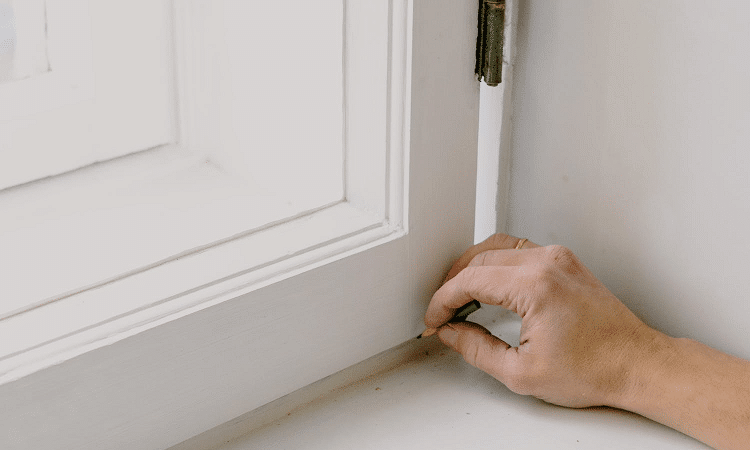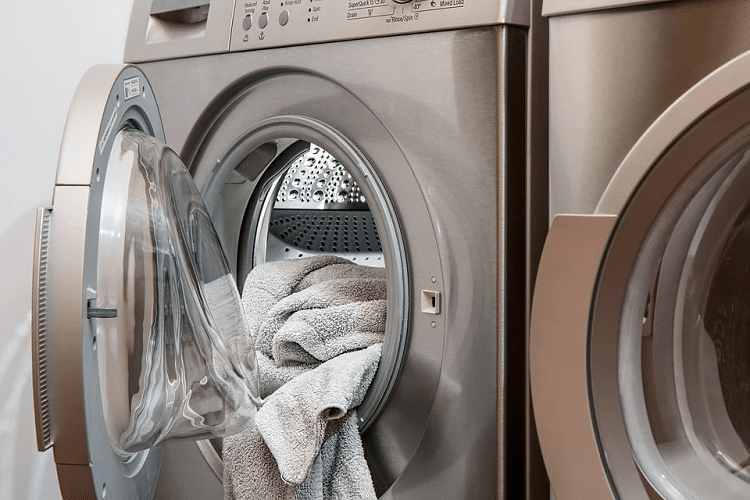Although Dallas has pretty mild winters, we still get some sleet, ice, hail, snow (rarely), and freezing overnight temperatures. To prepare your home for the inclement weather ahead, check out our list of essential home maintenance tasks every homeowner should tackle this winter season.
1. Prepare Your Air Conditioner for Winter
If you haven’t turned on your air conditioner in a while due to the great fall temperatures, you should consider winterizing it so it is ready to use come spring. Winterizing a central ac unit and a window ac unit, all have different requirements.
For a central ac unit first you want to shut off your air conditioner using the controls indoors. Then remove any leaves or debris you find on the unit by wiping them away. Make sure it is not a freezing cold day outside and spray your unit down with a hose to remove dirt buildup inside the condenser. Once the unit is dry, to protect it from possible winter damage like a hail storm or falling debris (and to protect you from heavy repair fees), cover only the top with a tarp or other small structure to protect it from the elements. Make sure not to cover the entire unit as small animals may decide to use that as shelter form the winter elements and it could lead to moisture problems inside of your ac unit in the future. You also want to make sure that when covering the unit you leave room for airflow just in case you need to turn it on when those Texas temperatures spike again.
If you have a window air conditioner unit you have two options: Take the unit down and bring it indoors or completely cover the unit with a tarp or other covering material. Most HVAC experts agree that bringing in a window ac unit is the best option for winterizing. Once indoors you can easily clean the unit and store it, and you can avoid any issues with cold air seaping in through your windows. The only issue here is that in the Dallas, Texas region we go from frigid below-freezing cold temperatures to warm days with highs in the mid-80s or mid-90s even all throughout the shortened winter season.
This could make removing your window unit a less attractive idea, in that case you’ll want to follow these steps for leaving the window unit where it is until you need it again.
A. Turn off or unplug your window air conditioning unit.
B. Use a garden hose and soapy water to clean off dirt and debris from the outside of the unit, including the filter cover. Rinse it off and let the unit dry out.
C. Once dry remove the front cover piece from your unit to access to the filter. Remove the filter and inspect it. Some window ac fitlers are reusable, if yours is reusable and is in good shape you can clean it and put it back. Brush off all of the dirt and hair you can and clean the filter with soapy water. Let it dry and then put the filter back in your unit and close the front cover back up. If you filter is damaged, is not able to be cleaned, or is not a resuable one you’ll need to get a new filter.
D. Most window ac units today come with a cover for the outdoors portion to use during storms or the winter season. If you have one place it on your unit and make sure it fits correctly. If you do not have a cover use an online search engine and check to see if there is an aftermarket one available or your brand and model of air conditioner. If there are no covers that fit your unit you can fashion one out of tarp material, foam, and duct tape. Unlike a big outdoor ac unit tightly covering the window unit is ok, just make sure to remove the cover before turning it on for those warmer winter Texas days.
E. Insulate any exterior pipes on your window ac unit with insulating foam. Cut the foam to fit and secure it snuggly with duct tape to keep it in place all winter.
F. Finally check where the ac unit meets your window and ensure the fit is as air tight as possible to keep cold air from seaping through the gaps. Insulating foam can be used to fix any gaps you find as well as spray foam.
2. Check and Replace Wornout Weatherstripping on Doors and Windows
Over time weatherstripping on your doors and windows can wear away, creating gaps that allow the cold air to seap into your home which causes discomfort and spikes in your electricity and gas bills. Frequently thoughout our winter season a large mass of cold air makes its way down here from Canada bringing with it frigid temperatures that can plunge our region below to below freezing in only a few hours time and keeping us at those low temperatures for several days before the more mild winter temps we are all used to return.
Now that winter has arrived here in North Texas, it is a good idea to check the weatherstripping on your doors and windows to make sure they are still intact. If you notice any gaps, tears, or cracks, it may be time to replace them. To replace your weatherstripping we recommend calling on the services of a local handyman in Dallas or getting the materials from a hardware store and doing it yourself.
3. Check Your Electrical System
No one wants to be without power on a dark, cold day. Inspecting your breaker and its wiring can help ensure that you don’t have any inconvenient outages this winter.
Find the breaker box in your house, usually located in a closet or in your garage, to inspect the breakers for damage. Don’t try taking them out, only look at them using a flashlight. If you see discoloration, deteriorating insulation, or sparking, call an electrician so they can take a look at your system.
You may also want to go through the house and flip all of your light switches one-by-one to look for any flickering, sparking, or other issues. There is no reason to take off the covers and trying to fix issues you find yourself can cause more damage or even electrocution. Always have a professional electrician with a good reputation work on your home’s electric needs.
4. Clean the Dryer Vent
We all know that we need to clean out the lint trap before and after each load of laundry, but many people forget to maintain their dryer vents. Lint can get caught in your dryer’s ductwork and clog up your machine, which can decrease its efficiency by up to 30% and even lead to a house fire. That’s why you should clean out your dryer vent at least once per year, and the winterizing of your home is a perfect time to fit this project in.
If your dryer vent is short, you may be able to clean it yourself with a brush kit that attaches to a handheld drill. But if the pipe is long with lots of bends, it is best to hire a professional handyman to take care of it for you.
5. Check Your Hot Water Heater
Families usually use more hot water during the winter, so it is important to make sure that your hot water heater is in working order. One of the most common household problems during the winter in North Texas is a water heater breaking under the increased usage. Test the TPR valve for leakage and check the anode rod inside the water tank for signs of corrosion. You should also flush the tank to remove sediment buildup, which can damage your water heater and cause it to fail prematurely.
If you notice any water leaking from the top of your water heater tank or water pooling in the pan at the bottom call a professional immediately as the unit probably needs to be replaced. If you have a tankless water heater you may also want to check the temperature setting on the control panel to ensure the water is warm enough for your family.
6. Consider Installing Storm Doors and Windows
Installing storm doors and windows can reduce heat loss and lower your energy bills this winter. They can also help protect your doors and windows from the elements and extend their life, so they are often worth the investment. Many Texas homeowners opt to go without storm doors because they can trap heat in the summer against the main wooden door causing warping or other damage. Houses with an overhang over the front porch are less likely to benefit from a storm door and it may cause more inconveniences especially if you frequently are carrying arm loads of things like groceries, pets, or small kids through the door.
If you are considering a storm door talk over the pros and cons with a professional first, not a salesperson, to better understand if it is a right fit for your home and your needs.
7. Cover Outdoor Pipes
Although Dallas has mild winters, temperatures can still drop below freezing overnight and damage exposed outdoor pipes. That’s why it is important to cover your home’s exterior faucets and insulate your sprinkler system’s aboveground equipment and pipes. If you use aboveground removable sprinklers you should bring them indoors, at least to your garage, when not in use to keep them working properly. Some North Texans water their lawns and garden periodically throughout the winter, in thise case you might consider only adding covers to your faucets and piping if the temperatures are going to be below freezing that evening. You can find outdoor water faucet covers, plastic bags, duct tape, and insulating foam for pipes at most hardware stores.
Another way to protect yourself from costly pipe repairs is to leave your kitchen and bathroom sink faucets on drip when the local meterologist forecast calls for below-freezing or near-freezing temperatures (even if you don’t believe them). You’re not leaving the faucets running, just a slight drip to keep the water moving in the pipes which reduces the chances of it freezing and casuing cracks or breaks.
With the busy holiday season coming up, you may not have time to complete these winter home maintenance tasks yourself. We offer handyman and construction services to take home repair and improvement projects off your plate so you can focus on enjoying time with your family. Contact us today to get your free quote.



